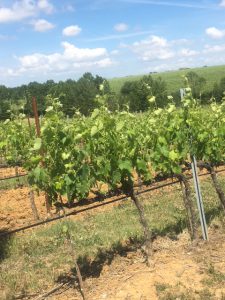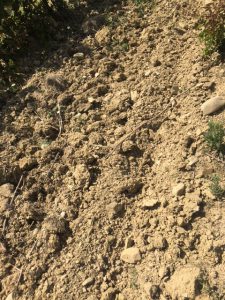Over the last four days, we had the opportunity to visit 4 wineries across Tosacana, Italy. We visited Brolio, Avignonesi, Antinori, and Fanti estates. Each estate offered some insight into their production of wine from the field to the final step of labeling. From my time at these different estates, I noticed some things they did similarly and others they did differently. This post is directed towards the viticulture, or the production of grapes.
First of all, when it came to the field, they most favored the VSP(Vertical-Shoot-Positioning) trellis system to train their grapes. This system allows the plant to grow in a upright fashion that allows for better sunlight and easy movement of air through the plant. The effectiveness of it in terms of cost and management has made it very popular at these estates.
Another common occurrence through the vineyards was the pale rocky soil. Through my time here, I learned that soil low in nutrients and rocky are actually the best for wine grape growing. By starting with soil low in nutrients, you have better control of nutrient levels. Additionally, Rocky soil allows for effective drainage of the soil. Wine grapes are not a fan of water logged soil and effective drainage can make all the difference in a harvest year. These two features allows for significant stress and every estate we went to explained how some stress on the plant is needed to make “quality grapes.” No amount of manipulation after harvest can make quality wine from non-quality grapes. This shows that importance of management practices used in the vineyard for the goal of quality wine.


